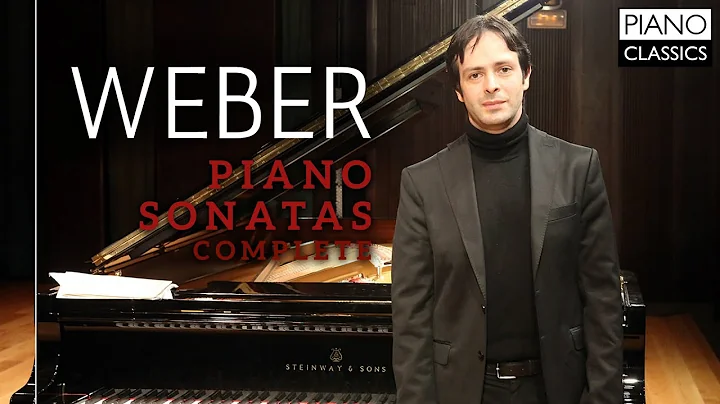Gregory D Weber
age ~74
from Tipp City, OH
Gregory Weber Phones & Addresses
- Tipp City, OH
- Mesa Verde National Park, CO
- Chicago, IL
- Granger, IN
- Dallas, TX
- Notre Dame, IN
- Huber Heights, OH
- Richmond, IN
Work
-
Company:Leydig, voit, & mayer, ltd - Chicago, ILJun 2011
-
Position:Associate attorney; summer associate
Education
-
School / High School:The Ohio State University, Moritz College of Law- Columbus, OH2009
-
Specialities:Juris Doctor
Skills
Patent Bar Eligible; Limited German read...
Languages
English
Specialities
Dentistry
Lawyers & Attorneys

Gregory Weber - Lawyer
view sourceOffice:
Gregory J. Weber, Attorney at Law
Specialties:
Child Support
Paternity
Paternity
ISLN:
902908404
Admitted:
1986
University:
Indiana University, B.A., 1979
Law School:
Mississippi College School of Law, J.D., 1986

Gregory Weber - Lawyer
view sourceOffice:
Quarles & Brady LLP
Specialties:
Intellectual Property
ISLN:
922717513
Admitted:
2014
University:
Ohio State
License Records
Gregory Lafayette Weber
License #:
40450 - Expired
Category:
Nursing
Issued Date:
Aug 16, 1984
Effective Date:
Jan 1, 1997
Expiration Date:
Oct 31, 1994
Type:
Registered Nurse
Medicine Doctors

Dr. Gregory J Weber, Woodridge IL - DDS (Doctor of Dental Surgery)
view sourceSpecialties:
Dentistry
Address:
3510 Hobson Rd Suite 103, Woodridge, IL 60517
(630)9644890 (Phone), (630)9644905 (Fax)
(630)9644890 (Phone), (630)9644905 (Fax)
Languages:
English

Gregory A. Weber
view sourceSpecialties:
Gastroenterology
Work:
HealthpartnersHealthpartners Riverway Clinic
601 Jacob Ln, Anoka, MN 55303
(763)5874400 (phone), (763)5874205 (fax)
601 Jacob Ln, Anoka, MN 55303
(763)5874400 (phone), (763)5874205 (fax)
Languages:
Chinese
English
French
German
Spanish
Vietnamese
English
French
German
Spanish
Vietnamese
Description:
Dr. Weber works in Anoka, MN and specializes in Gastroenterology. Dr. Weber is affiliated with Mercy Hospital.
Name / Title
Company / Classification
Phones & Addresses
Weber, Gregory J Dds
Dentists
Dentists
3510 Hobson Rd STE 103, Woodridge, IL 60517
(630)9644890
(630)9644890
Ops Mgr
Blastco Incorporated
POLYMER NETWORK, INC
Weber, Gregory J Dds
Dentists
Dentists
3510 Hobson Rd STE 103, Woodridge, IL 60517
(630)9644890
(630)9644890
WEBER LAWN CARE, LLC
Weber, Dr. Gregory J
Dentists · Oral Surgeons
Dentists · Oral Surgeons
3510 Hobson Rd, Woodridge, IL 60517
(630)9644890
(630)9644890
MM
Tempus Prime Systems, LC
Isbn (Books And Publications)


The Law of Hazardous Wastes and Toxic Substances in a Nutshell
view sourceAuthor
Gregory S. Weber
ISBN #
0314211667

Resumes

Gregory D Weber
view sourceLocation:
Tipp City, OH
Industry:
Higher Education
Work:
Indiana University East - Richmond, Indiana since 1992
Associate Professor of Informatics
Spring Hill College - Mobile, Alabama 1989 - 1990
Assistant Professor of Computer Science
Techpower 1984 - 1989
Consultant
Schreiber Foods 1981 - 1984
Senior Operations Planning Analyst
Associate Professor of Informatics
Spring Hill College - Mobile, Alabama 1989 - 1990
Assistant Professor of Computer Science
Techpower 1984 - 1989
Consultant
Schreiber Foods 1981 - 1984
Senior Operations Planning Analyst
Education:
University of Michigan 1990 - 1992
M.S., Computer Science and Engineering Indiana University Bloomington 1980 - 1981
M.B.A., Quantitative Business Analysis Indiana University Bloomington 1974 - 1980
Ph.D., Philosophy University of Evansville 1969 - 1973
B.A., Mathematics
M.S., Computer Science and Engineering Indiana University Bloomington 1980 - 1981
M.B.A., Quantitative Business Analysis Indiana University Bloomington 1974 - 1980
Ph.D., Philosophy University of Evansville 1969 - 1973
B.A., Mathematics
Skills:
Python
Programming
Higher Education
Teaching
University Teaching
Java
Software Development
Computer Science
Linux
Xml
Research
Artificial Intelligence
Public Speaking
E Learning
Distance Learning
Technical Writing
Human Computer Interaction
Instructional Design
System Administration
Faculty Development
Haskell
Programming
Higher Education
Teaching
University Teaching
Java
Software Development
Computer Science
Linux
Xml
Research
Artificial Intelligence
Public Speaking
E Learning
Distance Learning
Technical Writing
Human Computer Interaction
Instructional Design
System Administration
Faculty Development
Haskell
Interests:
Computer Science Education
Reading
Scrabble
Visual Programming (Sifflet)
Bicycling
Reading
Scrabble
Visual Programming (Sifflet)
Bicycling
Languages:
German
French
Latin
French
Latin

Gregory Weber
view sourceWork:
Brant Corrosion Control
Us Operations Manager
Us Operations Manager

Gregory Weber
view source
Gregory Weber
view source
Gregory Weber Chicago, IL
view sourceWork:
Leydig, Voit, & Mayer, Ltd
Chicago, IL
Jun 2011 to Jul 2013
Associate Attorney; Summer Associate LuK USA LLC
Wooster, OH
Jun 2006 to Aug 2009
Software Development Engineer Parker Hannifin, Parflex Division
Ravenna, OH
Aug 2004 to Aug 2005
Mechanical Engineering Co-Op, Lab Technician, Drafter Plastipak Packaging, Inc
Medina, OH
Jan 2004 to Jun 2004
Mechnical Engineering Co-Op, Quality Control
Chicago, IL
Jun 2011 to Jul 2013
Associate Attorney; Summer Associate LuK USA LLC
Wooster, OH
Jun 2006 to Aug 2009
Software Development Engineer Parker Hannifin, Parflex Division
Ravenna, OH
Aug 2004 to Aug 2005
Mechanical Engineering Co-Op, Lab Technician, Drafter Plastipak Packaging, Inc
Medina, OH
Jan 2004 to Jun 2004
Mechnical Engineering Co-Op, Quality Control
Education:
The Ohio State University, Moritz College of Law
Columbus, OH
2009 to 2012
Juris Doctor The University of Akron
Akron, OH
2002 to 2006
Bachelor of Science in Mechanical Engineering
Columbus, OH
2009 to 2012
Juris Doctor The University of Akron
Akron, OH
2002 to 2006
Bachelor of Science in Mechanical Engineering
Skills:
Patent Bar Eligible; Limited German reading and writing skills; C and Fortran computer languages; Westlaw; Thompson Innovation; Legal Research; PACER
Us Patents
-
Virtual Management Of Work Items
view source -
US Patent:20140095235, Apr 3, 2014
-
Filed:Sep 28, 2012
-
Appl. No.:13/630020
-
Inventors:Jonathan Robert Phillips - Plano TX, US
Gregory D. Weber - Westminster CO, US -
International Classification:G06Q 10/06
-
US Classification:705 714, 705 713, 705 715
-
Abstract:Systems and methods are provided to solve these and other problems and disadvantages of the prior art. A list of work items is received. A work item can be anything that a user may work on such as an email, an incoming call in a contact center, a trouble ticket, and the like. A user is identified to work on the list of work items. A virtual setting is created based on the list of work items and the user. The virtual setting includes a virtual list of work items that represents the list of work items and a user avatar that represents the user. The user can select a work item from the virtual list of work items. The user is then presented with the work item. For example, if the work item is an email, the email will be presented. The user can then process the work item.
Plaxo

Gregory Weber
view sourceWoodbridge, NJ

Gregory Weber
view sourceNew England Executive Director at Adams and Associ...
Myspace
Flickr
News

California voters, lawmakers have no say in OK of major river diversion plan
view source- "It is 100 percent certain that someone will make this appeal," said Gregory Weber, a water law expert at University of the Pacific's McGeorge School of Law in Sacramento, who is not involved with the council.
- Date: Mar 24, 2013
- Category: Business
- Source: Google

Gregory Weber Azevedo
view source
Gregory Weber
view source
Roy Gregory Weber
view source
Gregory Weber
view source
Amy Gregory Weber
view source
Gregory M Weber
view source
Gregory Weber
view source
Gregory Weber
view sourceClassmates

Gregory Weber
view sourceSchools:
East Central High School St. Leon IN 1978-1982

Gregory Weber
view sourceSchools:
Sevastopol High School Sturgeon Bay WI 1999-2003
Community:
Scott Frea, Sharon Laplant

Gregory Weber
view sourceSchools:
Neumann High School Buffalo NY 1966-1970
Community:
Mark Russo, Kathleen Neu, Kathleen Gavin, Leila Coulter, Elizabeth Barry

Gregory Weber
view sourceSchools:
Alexandria High School Alexandria AL 1998-2002
Community:
Judylee Prickett

Gregory Weber
view sourceSchools:
Florence-Carlton High School Florence MT 1981-1985
Community:
Evenette Homs, Tarrah Berger, Jay Lael, Joan Sadie

Gregory Weber
view sourceSchools:
Waldwick High School Waldwick NJ 1997-2001
Community:
Raymon Muniz, Kristy Lombardi, A N, Theresa Romanek, Jennifer Walker, Miguel Cortez, Karl Wagner, Allen Nicolosi, Tania Alvarado, Justin Ajamian

Neumann High School, Buff...
view sourceGraduates:
William Church (1963-1965),
Michael Ervolina (1971-1975),
Gregory Weber (1966-1970),
Gerald Cusimano (1965-1969),
Walter Swistak (1964-1979)
Michael Ervolina (1971-1975),
Gregory Weber (1966-1970),
Gerald Cusimano (1965-1969),
Walter Swistak (1964-1979)

Waldwick High School, Wal...
view sourceGraduates:
Greg Harris (1984-1988),
Dave Barnaba (2003-2007),
Judith Harris (1966-1970),
Gregory Weber (1997-2001)
Dave Barnaba (2003-2007),
Judith Harris (1966-1970),
Gregory Weber (1997-2001)
Googleplus

Gregory Weber
Lived:
Tipp City, Ohio
Ann Arbor, Michigan
Mobile, Alabama
St Paul, Minnesota
Green Bay, Wisconsin
Bloomington, Indiana
Evansville, Indiana
Angrenost
Anorien
Ann Arbor, Michigan
Mobile, Alabama
St Paul, Minnesota
Green Bay, Wisconsin
Bloomington, Indiana
Evansville, Indiana
Angrenost
Anorien
Work:
Indiana University East - Associate Professor of Informatics (1992)
Education:
University of Evansville - Mathematics, Indiana University - Philosophy, Business, University of Michigan - Computer Science and Engineering

Gregory Weber

Gregory Weber

Gregory Weber

Gregory Weber

Gregory Weber

Gregory Weber
Work:
University of Virginia - Postdoc

Gregory Weber
Youtube
Get Report for Gregory D Weber from Tipp City, OH, age ~74


















